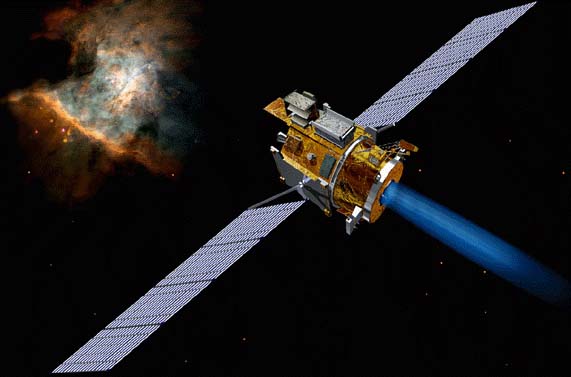
Home
Rocketry
Orbits
Technology
CEV
ISS
X-Prize
Virgin Galactic
RTG
Ion Propulsion
Ion Propulsion

Among propulsion technologies, ion, or nuclear propulsion is one that not only holds promise, but also was tested aboard Deep Space 1 (DS1) along with 11 other “high-risk” and unproven technologies between October 1998 and December 2001 as a part of the New Millennium program. Ion propulsion works by ionizing a gas, generally Xenon, by giving it a positive electrical charge by removing an electron. When Xenon is ionized it accelerates to a speed of about 30km/s, and by directing the accelerating Xenon ions towards the rear of the craft, a constant forward acceleration is achieved. This technology essentially makes use of Newton’s third law, which states that for every action there is an equal and opposite reaction. One important fact about ion propulsion is that it cannot be used to put a spacecraft into space. Although the specific impulse of the system is large (the gas is moving at a very high speed), the thrust, which is what produces the lift to get a rocket into space, is low (little gas moving at the high speed). Aboard DS1, the thrust of the ion engines was only around 92 milliNewtons, the same force as provided by the effect of the gravitational acceleration on a 9.3-gram mass.
There are several benefits for ion over chemical propulsion; ion propulsion requires little fuel, uses inert gases eliminating the chance of explosion, and is extremely efficient for missions with high-energy requirements, such as mission to distant bodies. That is to say, although it may not be of value for missions that require high acceleration; the propulsion method is excellent for missions to asteroids and comets, the inner solar system, and even some outer solar system missions as the steady acceleration of the ion propulsion is much more efficient than it’s chemical alternative.